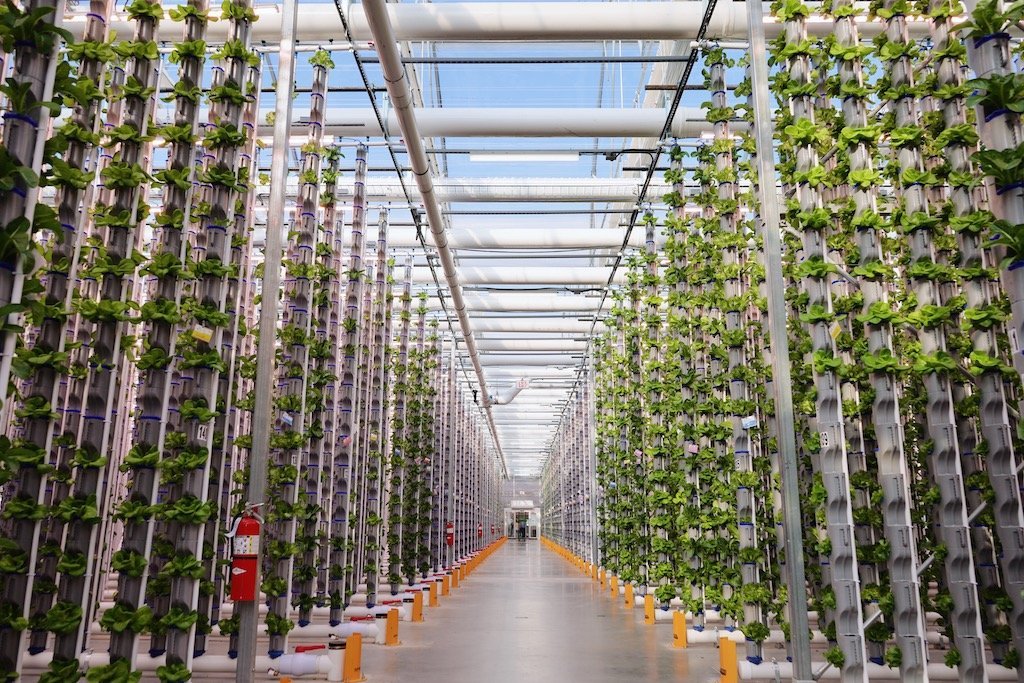The need for vertical farming arises from a rising population, shrinking arable land, and the impact of urbanization on agricultural space and accessibility.

In the face of a rapidly growing global population and increasing environmental challenges, traditional agricultural methods struggle to keep up with food demands. But fear not! A futuristic solution has emerged – “Vertical Farming.”
Picture farms that reach for the sky instead of sprawling across vast lands. In this article, we embark on an exciting journey to discover the need for vertical farming and the incredible benefits it offers to the world.
The Need for Vertical Farming:
The need for vertical farming arises from a rising population, shrinking arable land, and the impact of urbanization on agricultural space and accessibility. This offers a sustainable solution by maximizing land use and enabling the cultivation of crops in dense urban areas and unconventional environments, ensuring a resilient and resource-efficient approach to food production.
Vertical Farming: A Space-Saving Marvel:
This type of farming is a space-saving marvel that stacks crop vertically, utilizing available space efficiently. Transforming urban areas and abandoned buildings, it overcomes land constraints and brings farming closer to cities. This sustainable technique revolutionizes food production, offering a promising solution for the future.
Climate Resilience and Resource Efficiency:
Vertical farming ensures climate resilience by providing a controlled environment that shields crops from extreme weather. It reduces water consumption by up to 90% and saves up to 50% on energy use through resource-efficient practices. This sustainable approach tackles climate challenges and resource scarcity effectively.
Year-Round Production and Food Security:
This type of farming ensures year-round production by utilizing controlled environments, resulting in continuous harvests regardless of weather conditions.
Studies indicate that vertical farms can produce up to 95% more crops per square foot compared to traditional farming methods. This heightened productivity contributes to food security by reducing reliance on external sources and providing consistent access to fresh produce, supporting a sustainable and resilient food supply for the growing global population.
Bringing Farming Closer to Home:
Vertical farming brings agriculture closer to urban centers and homes. By locating farms within cities or integrating them into buildings, the distance between the farm and the consumer shrinks significantly.
This promotes sustainable “farm-to-table” practices, reducing food miles and ensuring fresher produce. Vertical farming empowers communities to be more connected with their food sources, fostering a stronger and more sustainable local food system.
Biodiversity and Organic Vertical Farming:
This embraces biodiversity, growing up to 50 different plant varieties in the same space as traditional farming. It prioritizes organic, pesticide-free cultivation, using up to 95% less water. This sustainable approach promotes a healthier planet, conserving natural resources and fostering ecosystem balance.
Empowering Food Deserts and Developing Nations:
Vertical farming empowers food deserts by providing fresh produce to underserved urban areas, reducing the distance between farm and consumer.
Studies show that it can increase crop yields by up to 75% compared to traditional farming methods, making it a promising solution for addressing food scarcity in developing nations. By fostering local food production, vertical farming enhances food sovereignty and creates economic opportunities for communities worldwide.
Global Vertical Farming Success Stories:
Innovative projects delivering impressive results worldwide. Singapore’s Sky Greens increased crop yield by 10 times in a compact space. Japan’s Mirai, producing 10,000 lettuce heads daily with 40% less energy than traditional farms.
US-based Aero Farms achieving 390 times more productivity in leafy greens compared to field farming. This empowers communities by providing locally sourced fresh produce and reducing carbon footprints.
Conclusions
Vertical farming is a game-changer for agriculture and food security. It addresses land constraints, reduces resource usage, and ensures year-round production. With its focus on biodiversity and organic practices, it promotes sustainability and a healthier planet. Empowering underserved communities and offering transformative solutions, this type of farming holds promising prospects for a resilient and nourished future.
